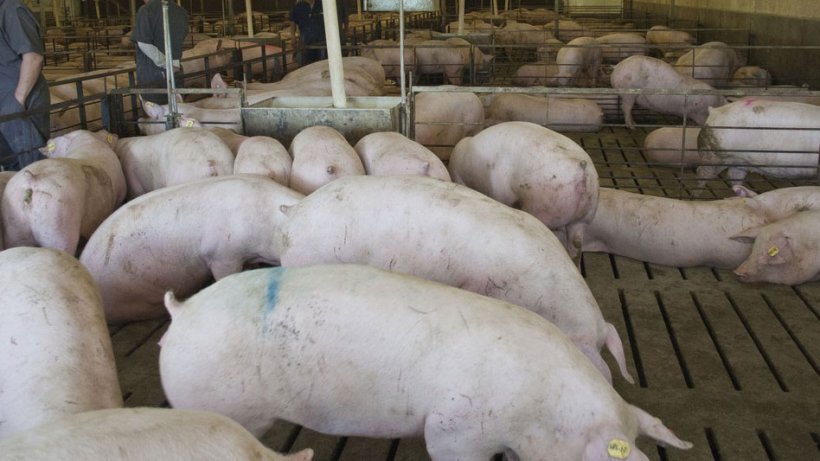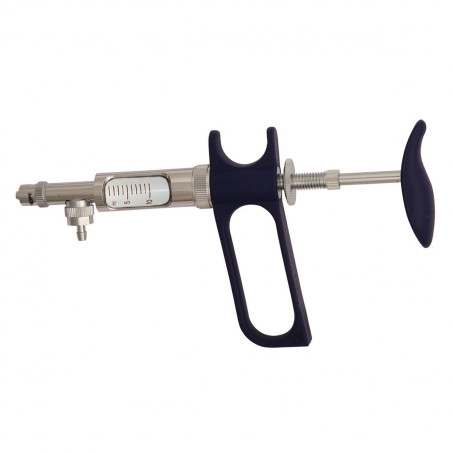In breeding herds, a proper gilt introduction strategy is key for PRRSV control. Unprotected (or already infectious) incoming gilts that show viremia at breeding or/and during gestation, could transmit the virus horizontally to other sows as well as vertically to their offspring. These types of transmission contribute to the destabilization of the herd’s health. The goal of PRRS virus acclimation programs is to expose gilts to the same strain of virus to which the herd is already immune, allow them to recover, and perform a smooth introduction into the breeding herd. In this article, we will review the different steps and timing of the acclimation programs that our 4 swine veterinary practitioners from Germany, North America, China, and Spain follow in their regions.
Vidal, the veterinarian from VallCompanys (Spain), has a very standardized protocol for the introduction of gilts into their farms. They enter groups of 90-100 kg animals from their off-site gilt developer units (GDUs) into their on-site acclimation facilities on a quarterly basis (every three months). On each of these four annual entries, the animals will go through an 8-week period of acclimation during which they ensure that all animals get exposed to a modified live vaccine (MLV), and potentially to the farm’s own live virus. This is difficult to ensure, as Vidal explained. The exposure will be followed then by a 4-week cool-down period. To achieve this complete PRRS virus exposure, the gilts get 2 doses of MLV vaccine, and a few days after the second dose, the group will be exposed to cull sows, feces from the farrowing rooms, as well as to infectious (targeted) piglets from the farm’s own nursery (i.e. site 2). Böhne, from Germany, agreed with this protocol with regards to exposing gilts to cull sows and to other viremic animals. She described this process very graphically as “heat the gilts up and then cool down”.

In North America, Pitkin explained that, to push gilt acclimation to be quarterly, a period of 30 days quarantine is needed to ensure the desired disease status at arrival to the main unit. She notes that 30 days is not necessary for PRRSV but is very important to serologically verify a Mycoplasma negative status following delivery to the quarantine (Picture 1). The timing of the complete protocol that she follows (quarantine and acclimation) is also between 10-12 weeks per batch of gilts. On the other hand, Wang considered that the protocols for gilt acclimation are much shorter in China and they will depend on the type of virus inoculation strategy that the farm follows. As we mentioned in our previous article, farms in China with off-site gilts replacement facilities tend to use Live Virus Innoculation (LVI) and the acclimation protocol is between 3 and 4 months. On the other hand, Wang explained that if the farm has an on-site gilts replacement facility the tendency is to use MLV and the acclimation could be as short as 1 or 2 months. This is likely the biggest difference between Wang’s experience in China and the rest of the practitioners from other parts in the world.

As a field veterinarian, I was also interested in knowing if our group of veterinarians encourage their clients to evaluate the immune status of the gilts after the acclimation period and prior moving them into the farm. All four agreed that this task is not completed routinely. Pitkin described the clinical signs that gilts can exhibit during the acclimation period when good exposure has occurred such as: decreased feed, coughing, and rough hair coat. In her experience, these signs are more obvious when LVI is used as the method for exposure. If these signs have not been observed, she encourages producers to complete ELISA testing on serum to confirm that exposure has taken place correctly.
Finally, we asked our group of veterinarians to describe the management scenarios for introducing the acclimated gilts into the main production systems. Wang described the use of parity 1 farms in China. In some production systems, the gilt acclimation period extends until the time of breeding of the second gestation. In parity 1 farms, the gilts are bred and gestated separately and not mixed with parity 2 and older sows until the second gestation. None of the other practitioners mentioned the use of this approach in their own regions. Vidal explained that, in their system, gilts get mixed with older sows at gestation. They expected some losses with this approach as there could be some ongoing acclimation during this first gestation period. However, they believe that this approach results in the production of a well adapted piglet during the growing phase. Böhne highlighted the fact that, since most of her farms are smaller when compared to the average sow farm in Europe, and they work with 3 to 5 week batch systems, they do not keep gilts separate and they must introduce them into each gestating batch. She also highlighted that these batch-farrowed farms had very good PRRS virus stability since they have considerably fewer piglet age groups in the farm at any given time.
In the next article our practitioners will describe how they measure PRRS virus stability in their farms.







